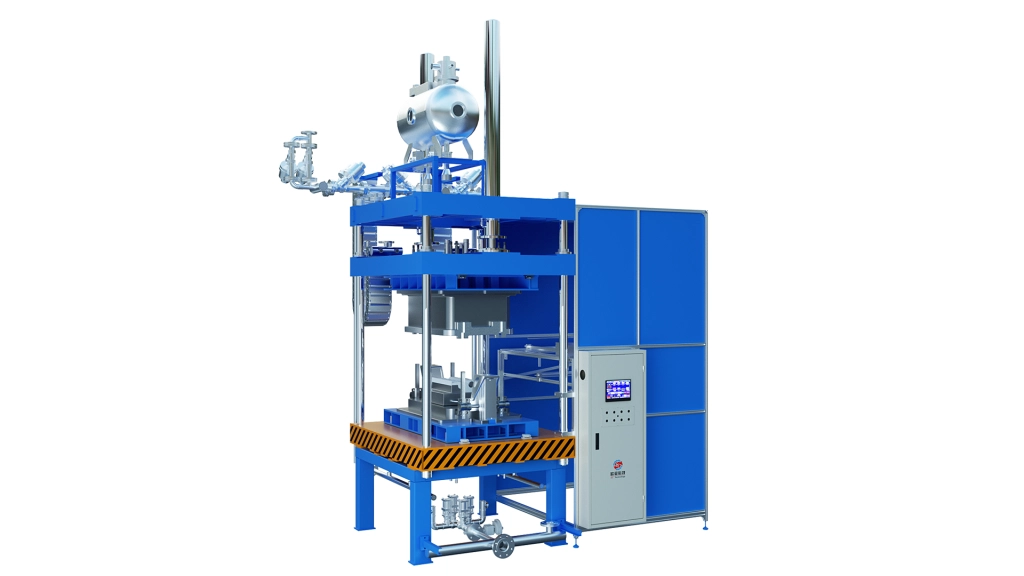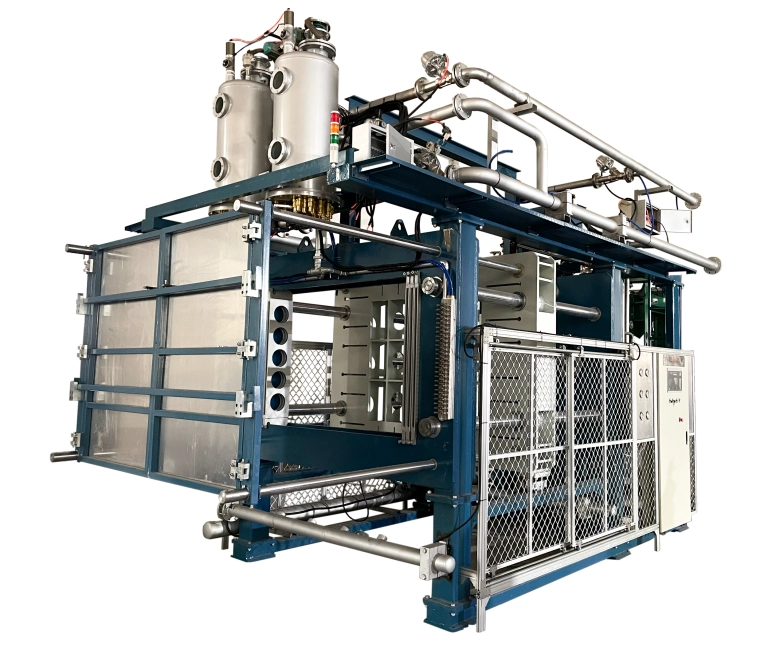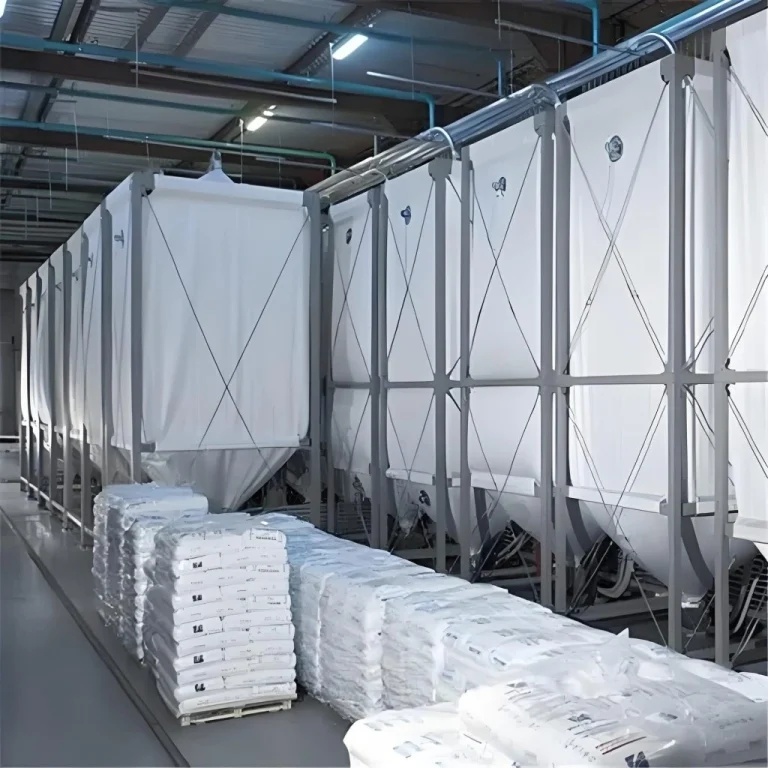Expanded Polystyrene (EPS) foam molding is a key process in many fields. It’s used for packaging, lost foam casting, cars, and building work. EPS foam molds are made with special machines built for accuracy, speed, and automation. This guide shows you step by step how to create EPS foam molds using top-notch EPS foam molding machines. It covers their features, benefits, and how to use them to get great results.

Introduction to EPS Foam Molding
EPS foam, or expanded polystyrene, is light, strong, and useful for many things. It’s great for insulation, packing, and building parts. Making EPS foam molds means turning tiny polystyrene beads into exact shapes through careful steps. EPS foam molding machines are built to handle this job automatically. They ensure fast work, steady results, and energy savings. These machines have cool tech like PLC control, hydraulic systems, and smart cooling to make high-quality molds.
This guide will take you through the whole process of making EPS foam molds, from getting raw materials ready to popping out the final piece. It also points out the best features of modern EPS foam molding machines that boost work and quality.
Understanding the EPS Foam Molding Process
The EPS foam molding process has several steps. Each needs careful control to meet industry rules. Here’s a clear breakdown of how it works:
1. Pre-Foaming: Preparing the Raw Material
The first step is Pra-Foaming. You take raw polystyrene beads and expand them to the right size. Steam heats the beads, making them grow up to 50 times bigger. This step is super important. It sets the density and quality of the final mold.
Today’s EPS foam molding machines have pre-foaming systems with exact heat and pressure controls. For example, a pressurized tank with auto-feeding keeps bead growth steady. The system uses computer-controlled air valves to hold constant pressure. This stops beads from getting too big and keeps them even.
2. Bead Maturation
After pre-foaming, the beads need to rest to balance their inner pressure. This resting, or maturation, takes 4–12 hours, based on the bead type and room conditions. The beads sit in silos or hoppers. Air seeps into the expanded beads, making their pressure even.
EPS foam molding machines make this easy with automatic material handling. These systems get beads ready for the next step without workers stepping in. This cuts wait time and labor costs.

3. Molding: Shaping the Foam
The molding step shapes the beads into the final form. This happens inside the mold cavity of an EPS foam molding machine. The machine is built to handle high heat and pressure. Here’s how it goes:
Filling the Mold Cavity: Matured beads move into the mold using a pressurized system. Top machines have multi-point or zone-grouped filling. This spreads beads evenly with little density difference. The mold has overpressure protection to avoid damage during filling.
Heating and Fusion: Steam heats the beads once the mold is full. This makes them stick together. The machine’s smart heating system, often with bypass pipes, spreads steam well. This cuts molding time and saves energy. Digital valves and sensors control steam flow exactly. They keep mold pressure steady for great quality.
Pendinginan: After sticking together, the mold cools to harden the foam. EPS foam molding machines use neat cooling tricks, like water flooding or vacuum cooling with energy recovery. These speed up cooling and save power, making cycles faster.
Demolding: Once cool, the mold opens, and the EPS foam piece pops out. High-heat demolding tech ensures a smooth release without harming the mold or product.
Modern EPS foam molding machines, like those with PLC control, automate these steps. They save settings in a database for easy tracking and use. This takes out guesswork and keeps results steady across batches.
4. Post-Processing and Finishing
After demolding, the EPS foam mold might need extra work. This could be trimming, coating, or treating the surface, depending on its use. The mold’s tough build, made from Q325 steel with hot-dip galvanizing, makes it last long. It resists rust and works well in tough settings.
Key Features of EPS Foam Molding Machines
EPS foam molding machines are made for precision, speed, and automation. Here are some top features that make them great for making EPS foam molds:
Sistem Kontrol Lanjutan
Modern machines use Siemens smart controls with easy Windows screens. They include electric valves, position sensors, and pressure sensors. These control every part of molding, from filling to cooling. Remote control and fixing options let you tweak settings in real time. This cuts downtime and keeps performance steady.
Hydraulic Mold Locking Mechanism
New hydraulic systems give strong locking power compared to old EPS gear. Evenly spread locking points keep the mold steady. This stops steam leaks and boosts heating speed. It leads to quicker cycles and less energy use.
Quick Mold Replacement Systems
Changing molds fast is key for busy production. Top EPS foam molding machines have quick-change systems with guide rails, material bumps, and fast racks. A one-touch mold swap can finish in just 5 minutes. This boosts machine use and cuts labor costs.
Energy-Saving Technologies
Saving energy is a big deal for modern EPS foam molding machines. Features like steam-water separation, vacuum cooling recovery, and high-heat demolding cut energy use. They keep production high and support green manufacturing.
Durable Mold Construction
Molds are made from Q325 steel plates, welded and heated at 600°C to stay strong. Extra steps like shot blasting, sandblasting, and hot-dip galvanizing stop rust. This makes molds tough for long-term use.
Benefits of Using EPS Foam Molding Machines
Getting a high-quality EPS foam molding machine brings lots of perks for makers:
- High Speed: Automated steps and fast mold swaps cut cycle times and boost output.
- Steady Quality: Smart controls and exact settings ensure even mold quality every time.
- Penghematan Energi: Cool heating and cooling tricks lower power costs.
- Less Labor: Automation and hands-free systems cut the need for workers.
- Tough and Trusty: Strong molds and rust-proof treatments last in hard settings.
Applications of EPS Foam Molds
EPS foam molds are used in many fields, including:
- Packaging: Safe packing for gadgets, appliances, and fragile items.
- Construction: Insulation panels, decorative shapes, and light building parts.
- Otomotif: Shock-absorbing parts, interior panels, and part packaging.
- Medical: Clean packing for medical tools and gear.
Tips for Optimizing EPS Foam Molding
To get the best from EPS foam molding machines, try these tips:
- Regular Care: Check machines and molds often to keep them running well and avoid breaks.
- Tune Settings: Use the machine’s database to adjust settings for different products. This cuts trial-and-error time.
- Good Materials: Pick top-quality polystyrene beads for even expansion and sticking.
- Train Workers: Teach operators how to use controls and swap molds to work faster.
- Watch Energy: Use energy-saving features to cut costs without losing quality.
PERTANYAAN YANG SERING DIAJUKAN
Q: What is the EPS foam molding process?
A: It involves pre-foaming polystyrene beads, resting them, filling a mold, heating to stick beads, cooling, and popping out the product. Smart machines automate this for speed and accuracy.
Q: How long does it take to change molds in an EPS foam molding machine?
A: With quick systems, mold swaps take 20–30 minutes. One-touch systems can do it in about 5 minutes.
Q: Are EPS foam molding machines energy-efficient?
A: Yes, they use tricks like steam-water separation, vacuum cooling, and high-heat demolding to save energy while keeping output high.
Q: What materials are used for EPS foam molds?
A: Molds are made from Q325 steel, heated at 600°C, and treated with shot blasting, sandblasting, and hot-dip galvanizing for strength and rust-proofing.
Q: Can EPS foam molding machines be customized?
A: Yes, they can be tailored for specific mold sizes and production needs, making them flexible for many uses.
Elevate Your EPS Foam Molding with Advanced Solutions
Ready to improve your EPS foam molding? Hangzhou Ouchen Technology Co., Ltd. offers top EPS foam molding machines for high speed, accuracy, and energy savings. Based in Xindeng Town, Fuyang District, Hangzhou City, we focus on smart lost foam gear. We blend German EPS/EPP tech with our own patents for great results. Our machines, like the Vertical PLC Hydraulic Forming Machine and Horizontal Forming Machine, streamline work, cut labor costs, and ensure steady quality.
Hubungi kami to see how our solutions can change your production. Reach out via:
- Telepon: +86 15988479417
- E-mail: zyh@oc-epc.com
- Website: www.oc-epc.com
Learn why we’re a trusted partner of the China Lost Mold Industry Association and a leader in high-end gear. Let’s build better together!





